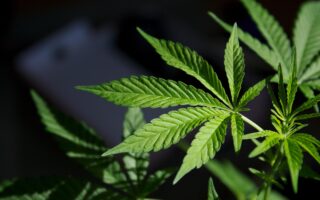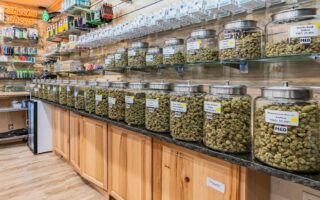Unveiling the Spectrum: The Rise of UV Cannabis
In the ever-evolving landscape of cannabis cultivation, a new frontier has emerged that bridges the gap between nature’s ancient rituals and modern agricultural science: UV cannabis. As the conversation around sustainable and innovative farming practices intensifies, the significance of ultraviolet light in enhancing cannabinoid profiles, terpene richness, and overall plant health is gaining traction. This article delves into the fascinating world of UV cannabis, exploring its benefits, cultivation techniques, and the implications for both growers and consumers. Join us as we shine a light on how this cutting-edge approach is reshaping the cannabis industry, promising not just a higher quality product but also a deeper connection to the natural elements that have long defined the plant.
Table of Contents
- Exploring the Science Behind UV Cannabis Cultivation
- Maximizing Potency and Flavor: The Role of UV Light in Cannabis Production
- Best Practices for Harnessing UV Technology in Your Grow Space
- Evaluating the Benefits and Risks of UV Cannabis Exposure for Consumers
- Q&A
- Future Outlook
Exploring the Science Behind UV Cannabis Cultivation
At the forefront of cannabis cultivation innovation lies the strategic application of ultraviolet (UV) light. This often overlooked aspect of horticulture plays a pivotal role in enhancing the biosynthesis of cannabinoids and terpenes, ultimately leading to products with greater potency and aroma. By harnessing the natural UV spectrum, growers can stimulate the plants’ stress response, resulting in increased resin production. This not only elevates the quality of the final product but can also bolster plants’ resilience against pests and diseases.
Incorporating UV lighting into indoor and greenhouse cannabis cultivation methods involves understanding the different wavelengths of UV light and their specific impacts on plant health. Key benefits include:
- Enhanced cannabinoid production – Stimulating higher concentrations of THC and CBD.
- Terpene enrichment - Boosting aromas and flavors to meet market demands.
- Improved pest resistance – Encouraging defenses against harmful insects and fungi.
To illustrate the optimal UV light exposure durations, consider the following table:
| UV Light Type | Recommended Exposure (Hours/Day) | Expected Benefit |
|---|---|---|
| UVA | 6-8 | Improved growth and photosynthesis |
| UVB | 1-3 | Increased resin production |
| UVC | 0.5 | Pest deterrence |
Maximizing Potency and Flavor: The Role of UV Light in Cannabis Production
In the realm of cannabis cultivation, harnessing the power of UV light can significantly influence both the potency and flavor of the final product. By simulating natural sunlight with a balanced spectrum that includes UV-A and UV-B radiation, growers can enhance the production of trichomes—tiny, potent structures on the plant’s surface that are rich in cannabinoids and terpenes. This not only leads to more robust flowering phases but also contributes to a richer aromatic profile. Benefits of UV light in cannabis cultivation include:
- Increased THC and CBD Levels: Exposing plants to UV light can stimulate the biosynthesis of cannabinoids.
- Improved Terpene Profiles: UV exposure enhances the development of terpenes, adding unique flavors and aromas.
- Natural Pest Repellent: Higher resin production due to UV light can deter pests in the growing environment.
Moreover, the timing and intensity of UV exposure are critical to achieving optimal results. Growers must carefully monitor their UV application, as excessive exposure can stress plants, leading to adverse effects. An effective strategy might involve a gradual increase in UV light exposure as the plants enter the flowering stage, optimizing both yield and quality. Below is a simplified table showing recommended UV exposure times based on growth stages:
| Growth Stage | Recommended UV Exposure |
|---|---|
| Seedling | 0-15 min daily |
| Vegetative | 15-30 min every other day |
| Flowering | 30-60 min daily |
Best Practices for Harnessing UV Technology in Your Grow Space
To effectively harness the power of UV technology in your grow space, it’s essential to create a balanced environment that promotes healthy plant development while minimizing risks. First, consider the type of UV light you intend to use. UV-B lights can stimulate resin production and enhance cannabinoid levels, while UV-C can help reduce mold and mildew. Utilize timers and sensors to ensure that your plants receive optimal exposure without overwhelming them. Regular monitoring can help you adjust the exposure times based on plant responses, ensuring that they thrive under your care.
Implementing safety measures is crucial when working with UV technology. Here are effective strategies to keep in mind:
- Install protective shields to prevent direct exposure, safeguarding both plants and growers.
- Employ reflective materials to distribute UV light evenly across your grow space.
- Regularly calibrate your UV equipment to maintain precise output levels.
Utilizing a UV light schedule can help create a regimen that maximizes effects while adhering to best practices:
| UV Light Type | Recommended Exposure Time |
|---|---|
| UV-B | 2-4 hours daily |
| UV-C | 30 minutes every 2-3 days |
Evaluating the Benefits and Risks of UV Cannabis Exposure for Consumers
As consumers continue to explore novel methods of cannabis consumption, the potential application of UV light in enhancing cannabinoid potency presents a fascinating avenue worth discussing. The benefits of UV exposure for cannabis include increased levels of certain cannabinoids and terpenes that can amplify therapeutic effects. Here are a few highlighted advantages:
- Enhanced Potency: UV light may increase the levels of THC and CBD in certain strains.
- Improved Flavor Profile: Exposure to UV can help retain and enhance terpenes, delivering richer flavors.
- Potential for Pesticide Reduction: UV light has natural disinfectant properties which can help reduce harmful microbes.
However, the risks associated with UV exposure cannot be overlooked. Just like the sun can damage our skin, excessive UV exposure can deteriorate cannabis quality, leading to harmful effects on both health and product integrity. Here are some potential risks consumers should consider:
- Degradation of Cannabinoids: Prolonged UV exposure may break down THC and other essential compounds.
- Potential Harm to Health: UV radiation can pose risks similar to those associated with prolonged sun exposure, including skin cancer.
- Quality Control Issues: Inconsistent UV methods might lead to unpredictable potency and effects.
| Aspect | Benefits | Risks |
|---|---|---|
| Potency | Increased cannabinoid levels | Potential cannabinoid degradation |
| Flavor | Enhanced terpenes | Unpredictable taste alterations |
| Safety | Microbial reduction | Health risks from UV exposure |
Q&A
Q&A: Understanding UV Cannabis
Q: What is UV Cannabis?
A: UV Cannabis refers to cannabis plants that have been cultivated or treated with specific ultraviolet (UV) light spectrums. This exposure can potentially enhance certain characteristics of the plants, such as cannabinoid and terpene profiles, which are essential for the aroma, flavor, and effects of the final product.
Q: How does UV light affect cannabis growth?
A: UV light, particularly UVB rays, can stimulate plants to produce protective compounds, including cannabinoids and terpenes. This process is akin to how humans produce vitamin D when exposed to sunlight. Thus, moderate UV exposure can encourage the plant to “defend” itself, potentially leading to a richer profile of therapeutic compounds.
Q: Are there different types of UV light that influence cannabis?
A: Yes, there are three main types of UV light: UVA, UVB, and UVC. While UVA has the least effect and is not as harmful, UVB is known to boost cannabinoid production, and UVC can be damaging. Most cultivators focus on UVB for its beneficial effects without the extremes that UVC might introduce.
Q: Does UV Cannabis have different effects compared to traditionally grown cannabis?
A: Potentially, yes. Many users report that UV Cannabis can have a more robust flavor and aroma profile due to increased terpene levels. Additionally, the presence of certain cannabinoids can vary, which may impact the overall experience and effects felt by consumers. However, effects can be subjective and vary from person to person.
Q: Is UV Cannabis more potent than standard cannabis?
A: It can be! UV exposure may lead to higher concentrations of THC and other cannabinoids, contributing to a stronger product. However, “potency” is subjective and also depends on the specific strain, growing conditions, and individual tolerance levels.
Q: Are there risks associated with UV exposure during cannabis cultivation?
A: Yes, there are risks. Excessive UV exposure can damage the plant, hinder growth, and affect yield. It’s crucial for cultivators to carefully monitor light levels to strike a balance that maximizes benefit without causing harm.
Q: How is UV Cannabis marketed or sold?
A: UV Cannabis is often marketed as a premium product, highlighting its unique growing process and enhanced characteristics. Transparency about growing techniques is essential, so consumers can make informed choices based on their preferences for potency, flavor, and effects.
Q: Can UV Cannabis be grown at home?
A: Absolutely! Home growers can incorporate UV lights into their setups, but it’s important to understand the appropriate light spectrum and duration to achieve desired results without damaging plants. Many hobbyists experiment with various growing methods to find the best fit for their needs.
Q: Is there ongoing research about UV Cannabis?
A: Yes, the cannabis industry is continually evolving, and researchers are actively studying the effects of UV light on cannabis growth and composition. This research aims to uncover best practices for cultivation and explore the potential benefits for both recreational and medicinal users.
Q: Where can I learn more about UV Cannabis and its effects?
A: There are numerous resources available, including academic journals, cannabis cultivation forums, and reputable cannabis industry publications. Engaging with expert growers and attending workshops or webinars dedicated to effective cultivation techniques can also provide valuable insights.
Future Outlook
As we draw the curtain on our exploration of UV cannabis, it becomes clear that this intriguing convergence of botany and science is more than just a trend—it’s a testament to the ever-evolving nature of cannabis cultivation and consumption. The potential benefits of utilizing ultraviolet light to enhance potency, flavor, and overall quality offer a new frontier for growers and consumers alike. While research is still in its infancy, the implications for sustainable practices and innovative growing methods are vast.
As we stand on the threshold of this bright new era, the key will be to approach these revelations with curiosity and caution, fostering a dialogue that prioritizes safety, efficacy, and environmental stewardship. Whether you’re a seasoned cultivator or a curious enthusiast, the future of UV cannabis invites us all to rethink what we know and embrace the possibilities that lie ahead. In this vibrant landscape, one thing is certain: the journey into the world of UV cannabis is just beginning, and the discoveries we make together will shape the path forward for generations to come.



